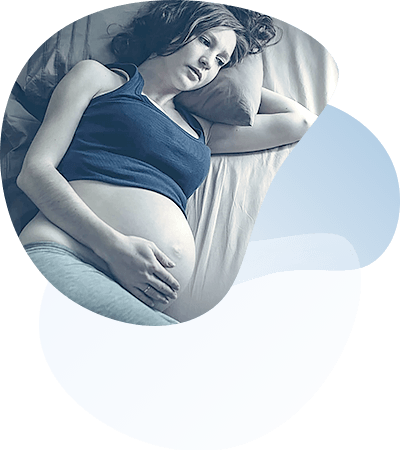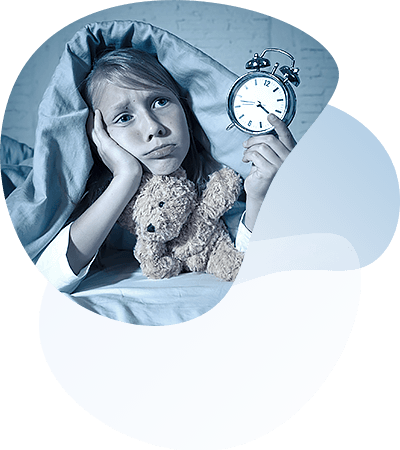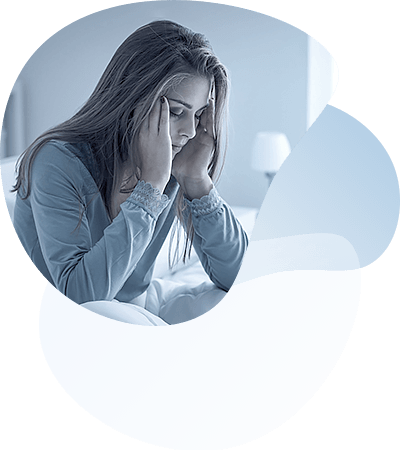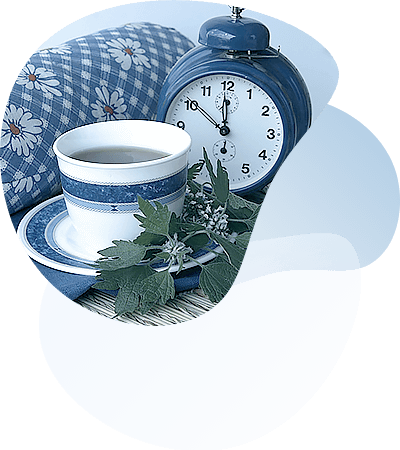The tasks faced by the therapist during the outpatient appointment of a patient with insomnia are quite complex and multifaceted. Firstly, it is necessary to clarify the genesis of insomnia, diagnose and decide whether to prescribe treatment himself or refer the patient to a specialist, such as a neurologist or psychotherapist. After all, in addition to primary insomnia, there is a secondary insomnia, which is not an independent disease, but a symptom of about 50 other diseases and disorders, such as depression, sleep apnea, restless legs syndrome, caffeine addiction, etc. In outpatient practice, up to 80% of all insomnia has a secondary genesis and requires different approaches to treatment.
Second, if a therapist decides to prescribe medication, it is necessary to navigate through the dozens of medications prescribed as sleeping pills and choose the most appropriate for the patient. The nature of the symptoms, the presence of concomitant diseases, contraindications, interaction with other drugs and side effects must be taken into account. For example, benzodiazepine sleeping pills are contraindicated for sleep apnea and nocturnal hypoxia, and long-acting hypnotics should not be prescribed to patients who sit behind the wheel of a car the next morning.
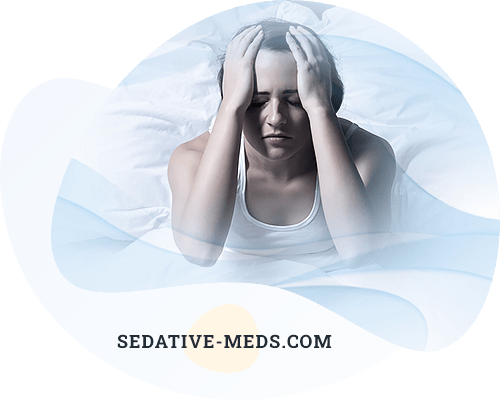
Now let's ask ourselves the question: how can we solve these problems in a 15-20 minute outpatient appointment? To paraphrase Otto von Bismarck's famous expression "Politics is the art of the possible", we can say that "An outpatient appointment for a patient with insomnia is the art of the possible". The author of this manual has also tried to meet the difficult challenge of writing a concise, practical guide for the therapist to help him do the best he can for a patient with insomnia in an outpatient appointment.
General information on insomnia
Definition and classification
First of all, it is necessary to define the term "insomnia" itself. A number of domestic authors prefer the term "insomnia" for this condition. However, we will use the term "insomnia" officially used in the International Classification of Diseases (ICD 10), which, among other things, is even more understandable to patients.
There is no generally accepted domestic definition of insomnia. We consider it appropriate to use the definition given in the International Classification of Sleep Disorders (2nd revision).
One or more criteria must be present to make a diagnosis of insomnia:
- Complaints of difficulty falling asleep initially, difficulty maintaining sleep, waking too early, or chronically unrefreshing or poor sleep.
- Sleep disturbances are noted despite opportunity and conditions for normal sleep.
- At least one daytime symptom associated with sleep disturbance must be present:
- Fatigue/weakness.
- Impaired attention, concentration, or impaired memory
- Decreased performance or poor academic performance
- Irritability, decreased mood
- Daytime sleepiness
- Decreased motivation/energy/initiative
- Tendency to make mistakes/incidents at work or driving
- Tension headaches and/or gastrointestinal symptoms after "bad" nights
- Anxiety about poor sleep
The most common causes causing pre-, intra- and postsomniac disorders
- Presomnics (Sleep Disorder):
- Sleep Phase Delay Syndrome (sleepwalking).
- Change of time zones (flights to the east)
- Anxiety state.
- Restless legs syndrome
- Intrasomnias (Sleep Maintenance Disorder):
- Obstructive sleep apnea syndrome
- Restless legs syndrome
- Pain syndromes
- Post-somnias (Early awakenings with inability to go back to sleep):
- Depression
- Early onset sleep phase syndrome (lark).
- Change of time zones (flights to the west)
- Alcohol addiction
Insomnia is classified according to its duration:
- Transient (transient) insomnia lasts no more than a week and is usually associated with some emotional experience or change in the life of the patient. Because of its short duration, transient insomnia is not a serious threat to the health of the patient. This form of insomnia usually does not require any special treatment, and sleep disorders disappear completely after the cessation of the psychological factors that caused the insomnia.
- Short-term insomnia lasts from 1 to 4 weeks. With this form of insomnia, sleep disturbances are more pronounced and the effects of insomnia on the entire body are more significant. With this form of insomnia, it is recommended to see a doctor and consult about the possible causes of insomnia, as well as on methods of its treatment.
- Chronic insomnia lasts more than 4 weeks. In this case, the symptoms of insomnia should be noted 3 or more times a week. Typically, this form is characterized by a pronounced pathological change in the patient's subjective attitude toward sleep, as well as the presence of various somatic/psychological factors predisposing to the development of this disorder. Treatment of this form of insomnia requires mandatory intervention by specialists and does not allow self-treatment.
Causes of episodic, transient and chronic insomnia
- Episodic insomnia (up to 1 week):
- Acute stress
- Acute somatic disease
- Jet lag syndrome
- Acute disturbance of sleep and wakefulness patterns
- Short-term insomnia(1-4 weeks):
- Ongoing stress
- Chronicity of acute insomnia (accession of conditioned reflex component)
- Onset of a chronic or somatic illness
- Persistent sleep and wakefulness disorder
- Chronic insomnia (more than 4 weeks):
- Chronic mental or somatic illness
- Sleep disorders (obstructive sleep apnea syndrome, restless legs syndrome)
- Alcohol and substance abuse
Insomnia is also divided into primary and secondary. Primary insomnia is diagnosed when no medical (mental, behavioral, medication) or other causes of insomnia can be identified. Secondary insomnia is a consequence of diseases and disorders that cause sleep disorders. There are about 50 causes of secondary insomnia.
Frequent comorbid conditions and conditions in secondary insomnia
- Sleep disorders: obstructive sleep apnea syndrome, central sleep apnea syndrome, restless legs syndrome, periodic limb movements in sleep, circadian rhythm disorders, parasomnias
- Neurological: stroke, dementia, Parkinson's disease, Alzheimer's disease, seizure syndromes, headaches, brain injuries, peripheral neuropathy, chronic pain syndromes, neuromuscular diseases.
- Mental: depression, bipolar disorder, dysthymia, anxiety, panic disorder, post-traumatic disorder, acute stress, schizophrenia, schizoaffective disorder.
- Cardiovascular: arterial hypertension, angina pectoris, congestive heart failure, shortness of breath, arrhythmias
- Pulmonary: COPD, emphysema, asthma, laryngospasm, shortness of breath
- Musculoskeletal: rheumatoid arthritis, arthrosis, fibromyalgia, Sjögren's syndrome, dorsopathies
- Gastrointestinal: gastroesophageal reflux, peptic ulcer of the stomach and 12 duodenum, cholelithiasis, colitis, irritable bowel syndrome
- Genitourinary: urinary incontinence, prostatitis, prostate adenoma, nycturia, cystitis.
- Endocrine: hypothyroidism, hyperthyroidism, diabetes mellitus
- Reproductive: pregnancy, menopause, premenstrual syndrome
- Others: allergies, rhinitis, sinusitis, bruxism, alcohol and drug dependence, withdrawal syndrome.
Prevalence
About one-third of adults experience insomnia intermittently, and about 10-15% suffer from chronic insomnia. According to a number of epidemiological studies, the prevalence of sleep disorders is noted in one third of all persons over 65 years of age. Unsatisfied with sleep is reported in 25% of older men and 50% of older women. More than 25% of patients regularly or frequently use sleeping pills...
Outpatient appointment for a patient with insomnia
At the outpatient appointment the therapist should solve the following tasks:
- Task 1. Clarify the primary or secondary genesis of insomnia and decide on treatment prescription or referral to other specialists.
It is advisable for the patient to fill out a questionnaire before the appointment
- I have trouble falling asleep.
- Thoughts "swirl" around in my head and prevent me from falling asleep.
- I am afraid not to fall asleep.
- It takes me half an hour or more to fall asleep.
- I wake up at night and can't go back to sleep.
- I wake up earlier in the morning than I'd like and can't go back to sleep.
- I worry about nothing and can't relax.
- I often experience sadness and depression.
- In the afternoon at rest or before going to bed, I have uncomfortable sensations in my legs (creeping, burning, pain) forcing me to move them.
- Sometimes I cannot lie quietly at night because of the discomfort in my legs and have to move them to relieve the symptoms.
- Physical activity (like walking) completely eliminates the discomfort in my legs.
- I have noticed (or others have noticed) that my limbs twitch while I sleep.
- I am told I snore.
- I am told that I sometimes stop breathing in my sleep, although I don't remember it after waking up.
- At night, I suddenly wake up feeling short of breath.
- I have increased night sweats at night.
- I have frequent nocturnal urination (2 or more times per night).
- I have a headache in the morning.
- I have high blood pressure.
- I am overweight.
- I have a decreased sex drive.
- I often experience sleepiness and have to make an effort to stay awake during the day.
- I have problems concentrating while performing professional duties.
- I have fallen asleep at the wheel while driving.
- Even if I slept through the night, I feel drowsy the next day.
A standard questionnaire for a patient with insomnia at an outpatient clinic
- What sleep disorders predominate: difficulty falling asleep, sleep maintenance disorders, early awakening with inability to fall asleep again? (See Table 1 for the most common causes of pre-, intra-, and post-somnia disorders)
- How long have your complaints been noted? (differentiate between acute and chronic (>30 days) insomnia).
- How often do they bother you (every night, several times a week, several times a month)?
- How much do sleep disturbances impair your daytime activities? Does daytime sleepiness bother you?
- Do you often change time zones (flights)? Do you have a shift work schedule? Do you keep a regular bedtime and wake-up time? (Disruption of circadian rhythms).
- Have you been told that you snore? Have you been told you have trouble breathing in your sleep? (Obstructive sleep apnea - barbiturates and tranquilizers are contraindicated; Z-hypnotics may be prescribed with caution!).
- Do you have resting leg discomfort that makes you move your legs? (Restless leg syndrome).
- Does your bed partner notice that your legs twitch or move in your sleep (intermittent limb movement syndrome)?
- Do you notice anxiety, fear, restlessness, inner tension? (Anxiety state).
- Do you have apathy, lack of positive emotions, depressed mood, loss of energy? (Depressed state).
- In what doses do you consume alcohol, coffee, tea, energizing drinks? Do you smoke?
- What medications are you taking regularly (e.g., stimulant antidepressants, steroids, decongestants, beta-adrenoblockers)? (items 12,13 - substance-related insomnia).
- What methods of insomnia treatment did you use and what was their effect?
- Do you regularly have to drive a car or operate dangerous machinery in the morning? (Do not prescribe barbiturates, tranquilizers, or zopiclone!)
Using a questionnaire and standardizing the survey saves considerable time and minimizes the possibility of diagnostic errors even in short outpatient appointments.
In general therapy practice, up to 80% of all insomnia is secondary. It is not possible to describe all types of secondary insomnia in detail within the framework of this manual. Below are the most frequent and clinically significant causes of secondary insomnia:
- Depressive state (15-25%)
- Anxiety state (10-15%)
- Obstructive sleep apnea syndrome and hypoxic conditions in sleep (5-10%)
- Restless legs syndrome (5-10%)
- Substance intake (caffeine, alcohol) and medications (5-10%)
Taken together, these disorders are identified in approximately 60% of all patients presenting to an outpatient therapist for insomnia. Of course, the diagnosis of only 60% of causes of insomnia is far from ideal, but this figure can be considered quite acceptable in the conditions of the therapeutic reception of the city polyclinic.
Further we will briefly dwell on the basic symptoms of the given disorders, accompanied by secondary insomnia.
Depressive state
Most commonly, patients complain of early awakening (at 4-5 a.m.) with an inability to go back to sleep. Upon awakening, they note an almost instantaneous "switching on" of the brain and a hard-to-stop stream of negative thoughts. Sometimes the phenomenon of sleep disturbance develops, when the patient experiences a complete lack of sleep for several days, weeks or even months. Sleep disturbance can be the first symptom of a depressive state, developing before the appearance of classical symptoms of depression: low mood, absence of feelings and desires, apathy, feelings of guilt, etc.
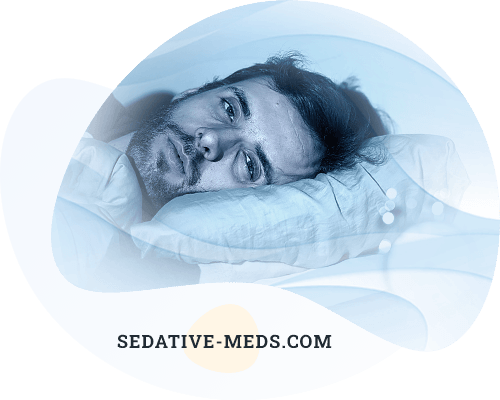
Anxiety state
As a rule, patients complain of difficulty falling asleep. Anxiety can be both situationally conditioned (against a background of stress), and having no external cause (endogenous). The main symptoms of anxiety are a feeling of internal tension, agitation, nervousness, palpitations, tingling in the heart area, a lump in the throat and a feeling of dissatisfaction with breathing.
If insomnia caused by psychological or psychiatric problems is detected, it is advisable to refer the patient to a psychotherapist or psychiatrist for consultation.
Obstructive sleep apnea syndrome
About 30% of all adults snore constantly in their sleep. Snoring is a precursor and one of the main clinical manifestations of obstructive sleep apnea syndrome (OSAS), a condition characterized by the presence of snoring, periodic upper airway collapse at the pharyngeal level and cessation of pulmonary ventilation with persistent respiratory effort, decreased blood oxygen levels, gross sleep fragmentation, and excessive daytime sleepiness.
In clinical practice, a fairly simple screening rule can be used with which to suspect OSAS and to prescribe additional examination:
If three or more of the following signs are present (or only the first sign), an in-depth evaluation for OSAS is necessary:
- Indications of sleep apnea.
- Indications of loud or intermittent snoring.
- Increased daytime sleepiness.
- Frequent nocturnal urination.
- Prolonged sleep disturbance at night (> 6 months).
- Arterial hypertension (especially nocturnal and morning hypertension).
- Obesity 2-4 degrees.
The likelihood of sleep apnea is very high (30-50%) in patients with the following somatic diagnoses:
- Obesity degree 2 or higher (body mass index >35).
- Metabolic syndrome.
- Pickwick's syndrome.
- Grade 2 or higher arterial hypertension (especially nocturnal, morning and refractory to treatment).
- Cardiac bradyarrhythmias at night.
- Cardiac insufficiency of degree 2 or higher.
- Severe COPD (SPH1 <50%).
- Respiratory failure of degree 2 or higher.
- Pulmonary heart failure.
- Hypothyroidism (decreased thyroid function).
Chronic nocturnal hypoxemia and sleep-dependent respiratory failure
Chronic nocturnal hypoxemia develops against the background of alveolar hypoventilation caused by such diseases as severe chronic obstructive pulmonary disease, pulmonary emphysema, bronchial asthma, neuromuscular diseases, morbid forms of obesity (Pickwick syndrome). Deterioration of condition at night is caused by disconnection of intercostal muscles from the act of breathing, decrease in diaphragm excursion, increase of bronchial resistance during sleep. Nocturnal hypoxemia is manifested by the following symptoms:
- Frequent awakenings and unrefreshing sleep
- Frequent nocturnal urination (>2 times per night)
- Difficulty breathing, shortness of breath, or episodes of choking at night
- Night sweats
- Wakefulness in the morning
- Morning headaches
- Significant daytime sleepiness
- Depression, apathy, irritability, low mood and memory loss
If obstructive sleep apnea or chronic nocturnal hypoxemia is suspected, the patient should be referred to a specialized sleep center for polysomnography, clarification of the diagnosis, and the prescription of specific treatment, including noninvasive assisted ventilation with constant positive pressure (CPAP-therapy) or an oxygen concentrator.
Restless Leg Syndrome
Restless legs syndrome (RLS) is a neurological disorder manifested by discomfort in the lower extremities and their excessive motor activity mainly at rest or during sleep. The main manifestations of the disease are as follows:
- Uncomfortable sensations in the legs. They are usually described as creeping goosebumps, shivering, tingling, burning, twitching, moving under the skin, etc. Sometimes it is difficult for a person to accurately describe the nature of the sensations, but they are always extremely unpleasant. These sensations arise in the thighs, shins, and feet and increase in waves every 5 to 30 seconds.
- Deterioration at rest. The most characteristic and unusual manifestation of the disease is the increased discomfort and the need to move the legs at rest. Deterioration usually occurs when sitting or lying down and especially when falling asleep.
- Improvement with movement. Symptoms are considerably lessened or disappear with movement. Normal walking or simply standing has the best effect.
- Correlation with the time of day. Symptoms increase significantly in the evening and in the first half of the night (between 6 p.m. and 4 a.m.). Before dawn, symptoms subside and may disappear altogether in the first half of the day.
- Limb movements during sleep. During sleep, periodic involuntary movements of the lower extremities are noted every 5 to 40 seconds.
- The disease is often accompanied by insomnia. Patients complain about problems falling asleep and restless night sleep with frequent awakenings. Chronic insomnia can lead to marked daytime sleepiness and other problems associated with prolonged sleep disturbance.
When restless legs syndrome is suspected, a consultation with a neurologist is indicated. There are now effective drug treatments for this condition.
Intake of psychoactive substances (caffeine, alcohol) and medications
Identifying insomnia caused by psychoactive substances or medications is very easy if you know which substances can cause insomnia and if the patient is consuming them.
Medications and psychoactive substances that cause insomnia
- Antidepressants: serotonin reuptake inhibitors (fluoxetine (Prozac), paroxetine, sertraline, fluvoxamine, duloxetine, monoamine oxidase inhibitors
- Stimulants: caffeine, methylphenidate, amphetamine, ephedrine and derivatives, cocaine
- Decongestants: phenylephrine, phenylpropanolamine, pseudoephedrine.
- Narcotic analgesics: oxycodone, codeine, propoxyphene.
- Cardiovascular: beta-blockers, alpha receptor agonists and antagonists, diuretics, lipid-lowering drugs
- Pulmonary: theophylline, albuterol.
- Alcohol, nicotine
At the end of the section on diagnosis, we would like to give the ICD-10 codes of some of the diagnoses that a physician can use at an outpatient clinic:
- G47. Sleep disorders
- G47.0. Disorders of falling asleep and maintaining sleep (insomnia)
- G47.1. Disorders in the form of excessive sleepiness (hypersomnia)
- G47.2 Sleep-wake cycle disorders
- G47.3 Sleep apnoea
- G47.4 Narcolepsy and cataplexy
- G47.8 Other sleep disorders
- G47.9 Sleep disturbance not specified
- F51. Sleep disorders of non-organic aetiology
- F51.0. Insomnia of non-organic aetiology
- F51.1 Sleepiness (hypersomnia) of non-organic aetiology
- F51.2 Sleep and wakefulness disorders of non-organic aetiology
- F51.3 Sleepiness (somnambulism)
- F51.4 Terrors during sleep (night terrors)
- F51.5 Nightmares
- F51.8 Other sleep disorders of non-organic aetiology
- F51.9 Sleep disorders of non-organic aetiology, not specified
- G25.8 Other specified extrapyramidal and motor disorders (this code can be applied to restless legs syndrome)
- E66.2 Extreme obesity accompanied by alveolar hypoventilation (this code can be used in patients with Pickwick's syndrome and chronic sleep-dependent respiratory failure)
- Task 2: Provide patients with written recommendations for sleep hygiene and behavioral cognitive therapy for insomnia.
If the therapist has decided to self-treat a patient with insomnia, it is necessary in any case to provide the patient with written recommendations for non-medicinal treatment of insomnia. Unfortunately, it is not possible to explain all aspects of behavioral cognitive therapy for insomnia, which includes a number of sections, to the patient in detail during an outpatient appointment.
Behavioral techniques for insomnia treatment
- Cognitive therapy: explaining to the patient false beliefs about sleep and ways to improve it
- Sleep restriction therapy: limiting the patient's actual stay in bed in order to provide deeper and more stable sleep
- Stimulus control therapy: eliminating negative conditioned reflexes associated with sleep. The bedroom should be associated with sleep
- Relaxation therapy: reduction of the patient's excitability and anxiety
- "Adjustment" of circadian rhythms: regular sleep/wake cycle, using light to synchronize biological rhythms
- Cognitive behavioral therapy: combination of behavioral and cognitive approaches listed above
General recommendations for sleep hygiene
- Observe your sleep schedule. The best way to ensure a good night's sleep is to follow a precise sleep schedule. To keep your biological clock running smoothly, always get up at the same time on weekdays and weekends, no matter how much you sleep.
- Reduce your sleep time. A person usually spends more time sleeping than necessary. Sleep is certainly an enjoyable activity, but not for people who suffer from insomnia. Ironically, reducing time in bed can significantly improve sleep depth and efficiency.
- Never force yourself to sleep. In many situations, the rule of thumb helps: "If something didn't work right away, try again and again." However, it is completely inappropriate for sleep. The more you try, the less chance you have of getting what you want. If you can't fall asleep, it's better to rest quietly, watching TV, reading, or listening to music, than tossing and turning all night in despair.
- Don't be afraid of insomnia. Many of those who suffer from insomnia have a compulsive fear of losing sleep when they go to bed. Insomnia is especially frightening on the eve of important events. In fact, one sleepless night does not usually affect short-term tasks such as negotiations, lectures, exams, or athletic competitions. Only with monotonous or very dangerous work should you worry about a deterioration in your abilities the next day.
- Don't solve problems the moment you fall asleep. Try to solve all accumulated problems before going to bed or postpone their solution to tomorrow. You can even set a special "worry time" 1 to 2 hours before going to sleep, when you will think about the problems. But after that, try to forget about them.
- Exercise regularly. Physical activity is one of the most effective anti-stressors. The best time for exercise is from 17 to 20 hours. The optimal frequency is 3 to 4 times a week, with a duration of 30 to 60 minutes. It is necessary, however, to stop exercising at least 90 minutes before going to bed.
- Reduce your consumption of stimulants. Usually a person consumes a significant amount of caffeine daily, which is contained in coffee, tea, various tonic drinks and chocolate. It is interesting to note that green tea has more caffeine than black tea. The stimulating effects of caffeine peak 2 to 4 hours after consumption. Try to take caffeine and caffeine-containing products no later than 6 to 8 hours before bedtime.
- Smoke less or quit smoking. The nicotine in cigarettes has an even greater stimulating effect than caffeine. Quitting smoking can greatly improve sleep. At the very least, try not to smoke 2 hours before bedtime.
- Maintain moderation in your alcohol consumption. Small doses of alcohol (50 g of vodka or 1 glass of wine) have a good sedative effect, but increasing the dose to 150 to 200 g of vodka can significantly reduce the duration of deep stages of sleep and cause intermittent, unrefreshing sleep.
- Do not go to bed hungry or with an overstuffed stomach. Avoid eating later than 2 to 3 hours before bedtime. Try not to eat foods that cause gas at dinner (nuts, legumes or raw vegetables). You should also avoid going to bed hungry. Have a light snack (banana or apple).
- Observe the bedtime ritual. Do regular mental and physical relaxation activities before going to bed. These may include a warm bath to reduce physical tension, self-involvement exercises, or listening to a tape of calm music for mental relaxation. Whichever method you choose, follow this ritual every night until it becomes a habit.
Here are 3 mental mistakes that people make when they have insomnia and comments on them
1. There is nothing worse than insomnia. It will ruin my day tomorrow and my whole life will go to waste.
We sometimes spend a sleepless night reading a book, playing cards, or visiting, but we don't consider it a disaster and we can feel and work reasonably well the next day. At the same time, a night spent trying to sleep is perceived by us as something terrible. Thus, what matters is not so much the lack of a night's sleep per se, as our attitude toward it.
2. If I can't get to sleep, I just have to try harder.
There is nothing worse than constantly trying to fall asleep in vain. Here you can cite the results of one experiment conducted in America in the 60s. On the first night, 100 subjects were told the time they fell asleep. Before the second night they were told that they would give out $100 to those who fell asleep faster than the previous night. And what did you think? The average time to fall asleep increased by 3 times!!!! Only 2 people out of 100 fell asleep faster. This is what trying to fall asleep leads to. If they are repeated constantly, a person develops a persistent conditioned reflex of fear of not falling asleep. This usually manifests itself in the fact that a person may be very sleepy, but as soon as he lies in his bed, sleep is as good as gone.
3. The longer I lie in bed, the more I manage to sleep and the better I feel.
What happens if you stay in bed for 10 hours instead of the 8 hours of sleep your brain needs? After a while, the 8 hours of sleep will spread out over 10 hours. It will become difficult to fall asleep, and you will wake up many times during the night. And most importantly, sleep will become very shallow. It is as if the same amount of water spreads over a larger surface, poorly covering it. During such a shallow sleep, the body's recovery is not complete, and in the morning you wake up tired and sluggish.
Naturally, you will think that you don't sleep enough and try to sleep even more. As a result, your sleep will become even less deep, you will wake up more often, and you will feel unrested in the morning. A vicious circle is formed. The longer you stay in bed, the worse your sleep and the greater the threat of developing serious insomnia. So, one of the basic rules for treating insomnia is to reduce the amount of time you spend in bed.
If insomnia is due to the development of a persistent conditioned reflex of fear of not falling asleep, behavioral therapy programs for insomnia can be used.
Methods of behavioral therapy for insomnia
Stimulus control therapy
- When you go to bed, you are only allowed to lie awake for 15 minutes. If the 15 minutes are up and you are not asleep, get out of bed. Do not go to bed and try to fall asleep again before the next hour begins. For example, if you went to bed at 11:00 p.m. and didn't fall asleep by 11:15 p.m., get up, go to another room (use the bed for sleeping only!) and watch TV or read. You can do something tedious, like ironing or organizing your papers. Do not go to bed before 00:00. If at the second attempt you have not fallen asleep by 00.15, get out of bed again and continue to stay awake until 01.00 and so on. It usually takes no more than 1-2 attempts. However, with severe insomnia, the first few days may require 3-4 attempts.
- Be sure to get out of bed at the same time in the morning, regardless of when you fell asleep. Even if you feel very sleepy, get out of bed anyway. It is best if you quickly do some exercise and get out into the fresh air.
- Do not lie down to rest or sleep during the day. A daytime nap will reduce your sleepiness by evening and negate all of your efforts the previous night.
- Keep a diary daily: every morning write down the time you went to bed, after what attempt you fell asleep, and when you got out of bed.
- If you failed to fall asleep 4 or more times during the week after your first attempt, you should remove the first hour from your bedtime.
- If during the following week you also failed to fall asleep 4 or more times after the first attempt, remove another hour from your bedtime. And so each subsequent week until you fall asleep after the first attempt at least 4 times a week. It is possible that after implementing this program, your time in bed will be 1-2-3 hours shorter, but your sleep will be deeper and more efficient.
- This program helps most people even if their insomnia has lasted several years. It should be noted, however, that a significant number of people go back to their old habits and insomnia after a while (perhaps after a few months or years). If this has happened to you, you should simply repeat the program described above, which will allow you to normalize your sleep again.
Sleep restriction therapy
Most people fall asleep more easily and sleep better when they feel sleepy. In order to induce sleepiness in the evening and help you fall asleep more easily, it is necessary to limit the length of your sleep or stay in bed each night for several weeks. In addition, please follow general sleep hygiene guidelines.
- You are only allowed to stay in bed for the amount of time you think you are sleeping, plus 15 minutes. For example, if you think you only sleep 5 hours each night (and it takes another 3 hours to fall asleep), then you are allowed to stay in bed for 5 hours and 15 minutes.
- You must get up at the same time every day. If you sleep 5 hours and usually get up at 6:00 am, you are allowed to be in bed from 00:45 am to 6:00 am.
- Do not try to take naps during the day.
- If you sleep for 85% of your time in bed, you can increase your time in bed by going to bed 15 minutes earlier. (You still need to get up at the same time in the morning.)
- Repeat this method until you are sleeping all 8 hours or the desired amount of time. You will probably notice that your sleeping time will be decreased by 1-2-3 hours compared to the period when you suffered from insomnia.
This technique is effective after 3 to 4 weeks. Remember that, as with sleep restriction therapy, you may be very sleepy during the day and you need to be extremely careful when driving and doing hazardous work.
As practice shows, if a patient receives written recommendations for non-medicinal treatment of insomnia and is psychologically determined to comply with them, the effectiveness of behavioral techniques is comparable to the use of hypnotics.
- Task 3: If the decision to prescribe medication is made, decide on the choice of a particular drug.
When prescribing sleeping pills, the physician must clearly understand the possible consequences of such actions. Ideally, hypnotics should not be taken for more than 4 weeks, but real life is far from ideal. Prescription drugs (hypnotics, anxiolytics, or antidepressants) are taken by patients for an average of 26 months, during which time the average continuous length of use is 35 nights. In Europe, about 30% of patients with insomnia take prescription hypnotics for more than 4-5 years. In the general population (patients with and without insomnia), 5% took prescription drugs and alcohol at the same time. The latter is especially true in our country, where alcohol consumption is perilously high. In the presence of alcohol dependence, the use of benzodiazepines and barbiturates fairly quickly leads to drug dependence as well. Prescribing sleeping pills can be compared to taking a loan from a bank. In every situation, you have to "pay back the sleep loan" and not all patients are able to cope with this and cancel sleeping pills in the future.
The current international guidelines "Clinical Recommendations for the Diagnosis and Treatment of Chronic Insomnia in Adults" give the following advice on the choice of pharmacotherapy in patients with primary insomnia
- New non-benzodiazepine benzodiazepine receptor agonists (e.g., zolpidem [Sunval, Ivadal], zaleplon [Andante], or short- or medium-acting benzodiazepines (e.g., temazepam [Signopam]).
- Antidepressants with a sedative effect, especially if insomnia is combined with anxiety/depression: trazodone, amitriptyline, mirtazapine.
- Combined treatment with non-benzodiazepine benzodiazepine receptor agonists or ramelteon and antidepressants with a sedative effect.
- Other drugs with a sedative effect: antiepileptic (gabapentin) and atypical antipsychotics (quetiapine [Seroquel], olanzapine [Zyprexa].
When prolonged use of sleeping pills is necessary, intermittent prescribing techniques that minimize the risk of drug dependence are appropriate.
Treatment according to the patient's needs, but with limited frequency of administration:
- Limiting the intake of sleeping pills to 10 pills per month.
- Medications should be taken only on the nights when the most severe insomnia is of concern.
Standard Intermittent Treatment:
- Treatment is given in standard courses of 2 to 3 weeks, followed by a break of 2 to 3 weeks.
- During the break, the main emphasis is on non-drug treatment of insomnia.
Controlled intermittent treatment according to the patient's need:
- Limitation of sleeping pills to three pills per week.
- On Sunday, the patient must identify three nights during the following week when sleeping pills can be used.
- The main criteria for selecting a "medication night" are the tasks and needs of the following day.
- The patient may, but is not required to take a pill on the "medicated" night.
- On the other nights, taking sleeping pills is strictly forbidden.
A Patient's Guide to the Use of Sleeping Pills
If your doctor has prescribed sleeping pills for you, take note of the following guidelines:
- Always use the drug in the dose recommended by your doctor. Never exceed the dose recommended by the doctor, even if the effectiveness of the drug is insufficient.
- Make sure you have no contraindications to taking sleeping pills.
- If you are taking any other medication, be sure to tell your prescribing physician.
- If the cause of your sleep disorders is some disease, don't forget about treating that disease. If insomnia is one of the symptoms of depression, treatment with sleeping pills alone is unacceptable. If pain prevents you from sleeping, it is better to take pain pills.
- Do not use a drug with a long half-life after midnight.
- The day after taking sleeping pills (barbiturates, medium- and long-acting benzodiazepines, zopiclone), never drive a car or operate dangerous equipment.
- If the day after taking sleeping pills you feel dizzy, insecure, sluggish or drowsy, see your doctor.
- Never consume alcohol at the same time as taking sleeping pills - their interaction can lead to adverse effects, up to and including coma and death.
- Use sleeping pills only for short periods of time (no more than 4 weeks).
- Whenever possible, use behavioral therapies instead of sleeping pills, which you can learn about from your doctor or from various self-help guides.
- Do not use sleeping pills if you are pregnant or think you may become pregnant.
- Do not use sleeping pills if you have ever had problems with various addictions (alcohol, drugs, gambling).
- If you have difficulty breathing in your sleep or snore heavily, tell your doctor, because in these cases it is necessary to rule out sleep apnea syndrome (which is a contraindication to the prescription of some sleeping pills: barbiturates and benzodiazepines).
The following factors are recommended when choosing a particular drug:
- The nature of the symptoms
- Treatment goals
- Effectiveness of previous treatment
- Patient preferences
- Price
- Availability of other treatments
- Presence of comorbid conditions
- Contraindications
- Interaction with other medications the patient is taking
- Side effects
Below we will focus on the choice of hypnotics. Currently in Russia, an overwhelming number of doctors prescribe benzodiazepines, based on information about previous effectiveness of treatment, cost parameters, and patient preference. In fact, this choice is based on the fact that these drugs are fairly well known to physicians and patients and are relatively cheap. A prime example of such a benzodiazepine is the domestic phenazepam, which is a long-acting medication and is currently prescribed in about 50% of insomnia patients. At the same time, benzodiazepines have significantly higher total risk of various side effects, frequency of residual effects, and frequency of adverse drug interactions compared to the new generation of non-benzodiazepine agonists of benzodiazepine receptors - the so-called "Z-group" (zopiclone, zolpidem, zaleplon). Benzodiazepines also have a higher risk of drug dependence compared to Z-hypnotics.
The use of benzodiazepine sleeping pills and barbiturates with myorelaxant and respiratory depressant effects is contraindicated in patients with established or suspected diagnosis of sleep apnea and/or sleep-dependent respiratory failure. The use of benzodiazepines may be associated with increased mortality in older patients.
Hypnotics are widely prescribed in the general population, in which about 30% of patients snore (a symptom of possible sleep apnea). If it is impossible to exclude sleep apnea in a snoring patient by objective research methods, and the clinical situation requires the prescription of sleeping pills, hypnotics should be prescribed that have the least effect on respiratory function, in particular zolpidem (sanval, ivadal). This drug does not impair breathing parameters and does not affect blood oxygen saturation during sleep in patients with snoring. A controlled double-blind study showed that zolpidem at a dose of 20 mg had no significant negative effect on respiratory function in patients with a mild form of obstructive sleep apnea.
Benzodiazepines are also contraindicated in patients with chronic pulmonary dysfunction due to COPD and other pulmonary pathology. At the same time, non-benzodiazepine benzodiazepine receptor agonists, the so-called Z-group (zopiclone, zolpidem), have no significant negative effect on pulmonary function in patients with mild to moderate degrees of COPD.
Given the pronounced residual effects of medium- and long-acting benzodiazepines (phenazepam, diazepam, nitrazepam, oxazepam, relanium, flunitrazepam, etc.) they are contraindicated in patients who anticipate driving a car in the morning after bedtime during course treatment with sleeping pills. Benzodiazepines reduce attention, concentration, and increase the risk of falling asleep at the wheel. When benzodiazepines were taken in doses twice as high as recommended, the ability to drive was impaired throughout the following day. Studies of drivers show that they often use higher than recommended doses of benzodiazepines. Coursome use of benzodiazepines statistically increases the risk of motor vehicle accidents. A significant association has been shown between a driver's guilty plea to an accident and the concentration of benzodiazepines in his blood. Since most hypnotics are prescribed to outpatients who are actively involved in normal life, it is critical to minimize these risks, especially in patients driving. This has led to a significant increase in the last decade in the use of Z-group drugs (zopiclone, zolpidem, zaleplon), which impair driving ability to a much lesser extent. However, there are works that have shown a reliable deterioration of driving ability when using the most long-acting Z-hypnotic zopiclone (Imovan, Somnol, Piclodorm). At the same time, no effect on driving ability was observed with Zolpidem (Sanval, Iwadal) and Zaleplon (Andante). Zolpidem also had no effect on concentration the day after taking the drug.
The above-mentioned advantages of the drugs of the Z-group have led to a significant change in the preferences of physicians and patients regarding hypnotics. Thus, according to a special survey in Great Britain, about 80% of general practitioners prefer the "Z"-drugs over benzodiazepines and consider them as first-line therapy for various forms of insomnia.
Characteristics of Z-hypnotics
- Zopiclone (Imovan, Piclodorm, Relaxon, Somnol)/7.5 mg tablets: 3.5 to 7 hours (average 5 hours)
- Zolpidem (sanval, ivadal, Nitrest)/ 10 mg tablets: 0.7 to 3.5 hours (2.4 hours on average)
- Zaleplon (andante)/capsules 5 mg: 0.5 to 2 hours(1 hour on average)
Zopiclone provides the longest lasting effect, but, as noted above, has an after-effect the next morning and is not recommended for use in patients driving a car.
Zolpidem has the most optimal duration of the sleeping pills. It provides complete sleep for 5-6 hours, with no aftereffect in the morning and does not impair concentration and attention.
The advantage of zolapidem (andante) is that it can be taken not only before going to bed, but also when waking up in the middle of the night (if there is at least 4 hours of sleep left). However, this is also some disadvantage of the drug, if it is used in patients not only with impaired falling asleep, but also maintaining sleep. In this situation, taking Zaleplon in the evening may require an additional second tablet in the middle of the night. If the patient has problems with both falling asleep and maintaining sleep, zolpidem is preferred.
To summarize, the first line of drugs prescribed to patients at outpatient appointments should be Z-hypnotics of medium (Zolpidem - Sunval, Iwadal) and short-acting (Zaleplon - Andante), which have the following characteristics
- Minimal risk of side effects
- Minimal effect on sleep breathing parameters
- Minimal risk of dependence and withdrawal syndrome
- No marked aftereffects in the morning and daytime
The use of these drugs is especially indicated in cases where a shortage of time or resources at an outpatient clinic appointment does not allow for a complete evaluation of the patient's condition and identification of all possible contraindications to the prescription of hypnotics. The use of drugs of the Z-group in this situation will contribute the most to observance of one of the basic precepts of medicine "Do no harm".


